views
Embarking on a winter trek is a thrilling yet challenging experience, especially when it’s your first time facing the unpredictable, icy terrain of the Himalayas. For Megh Naik, an avid trekker familiar with the Sahyadri Ranges, the Kedarkantha trek in December 2018 marked his entry into the world of snow-covered trails and sub-zero temperatures. Despite initial concerns about the cold and his gear, Megh’s determination to reach the summit led him through one of his most memorable outdoor adventures. Here, he shares insights from his journey, the preparation that went into it, the unexpected challenges he faced, and advice for those considering their own winter trek in the mountains.
1. WHAT WAS YOUR FIRST WINTER TREK AND WHEN DID YOU EMBARK ON IT?
My first winter trek was to Kedarkantha in Dec 2018, but I have done a few more treks after that like Brahmatal,
Sandakphu Phalut, Kuari Pass, and Pangarchulla.
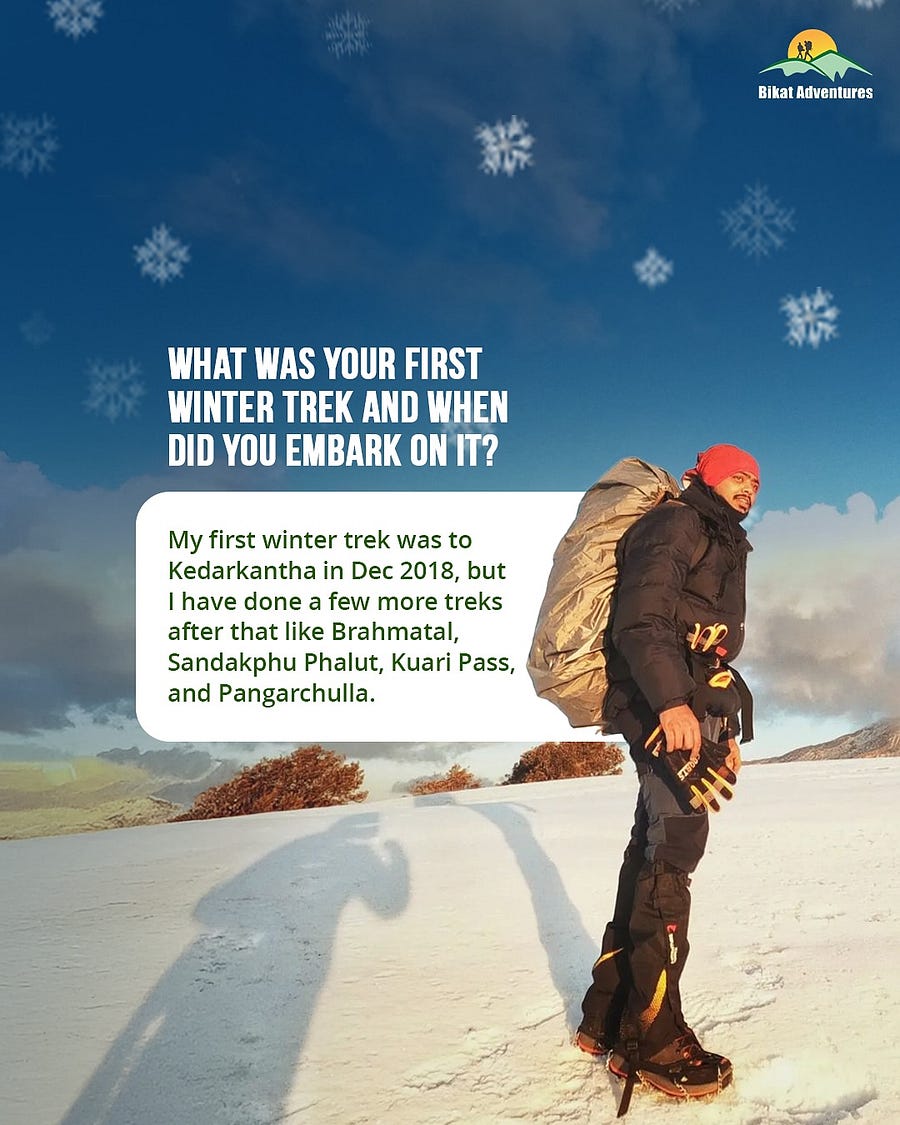
2. WHAT WERE SOME OF YOUR CONCERNS BEFORE DECIDING TO GO ON YOUR FIRST WINTER TREK?
Cold was a big concern, and I underestimated the temperatures and went under-packed for that weather. I am a regular trekker in the Sahyadri Ranges but never experienced sub-zero temperatures. I was worried about my shoes as well if they were right for snow and cold.
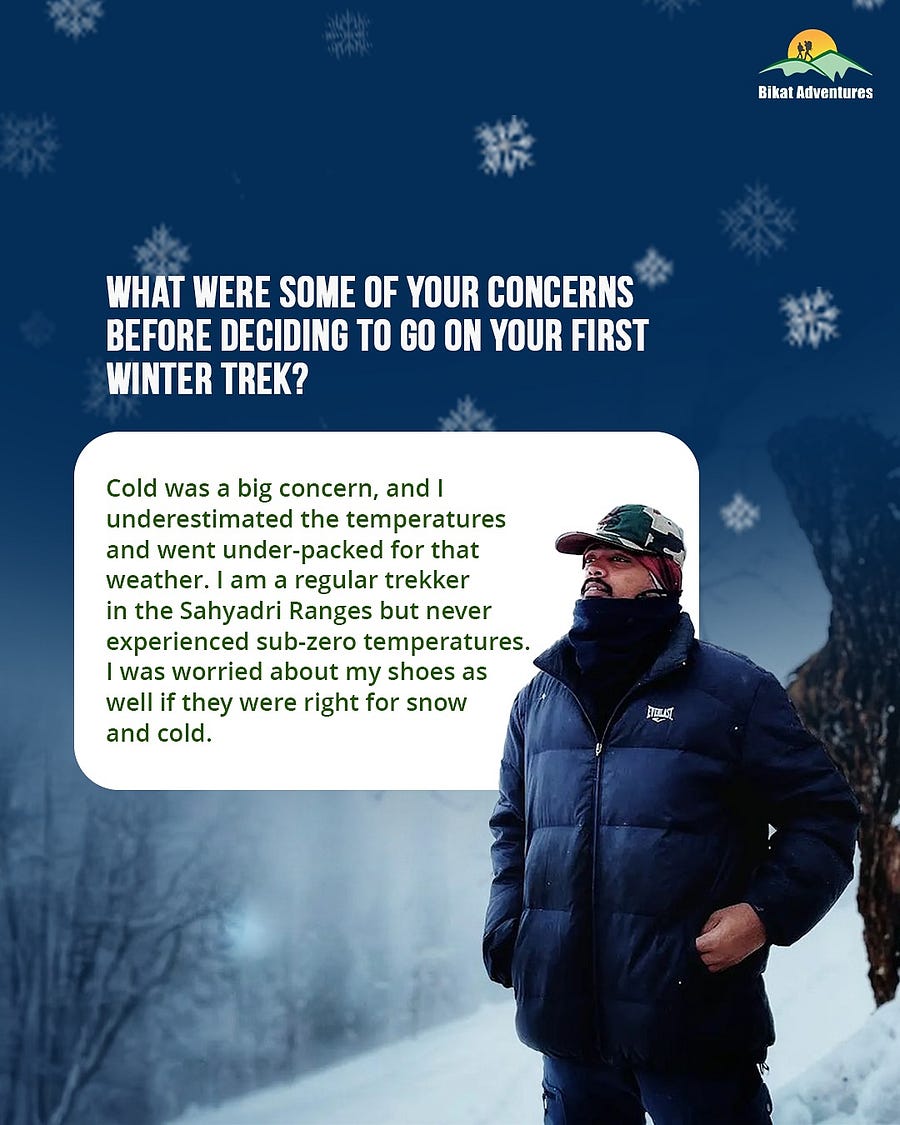
3. HOW DID YOU PREPARE PHYSICALLY AND MENTALLY FOR THE CHALLENGES OF A WINTER TREK?
Physical preparation was the usual, running 5km; 5 times a week, from 2 months before the trek. I didn’t prepare anything in particular just for a winter trek, because I was unaware of the challenges that are faced.
Mentally I had made a promise to myself that I would complete the summit and not give up.
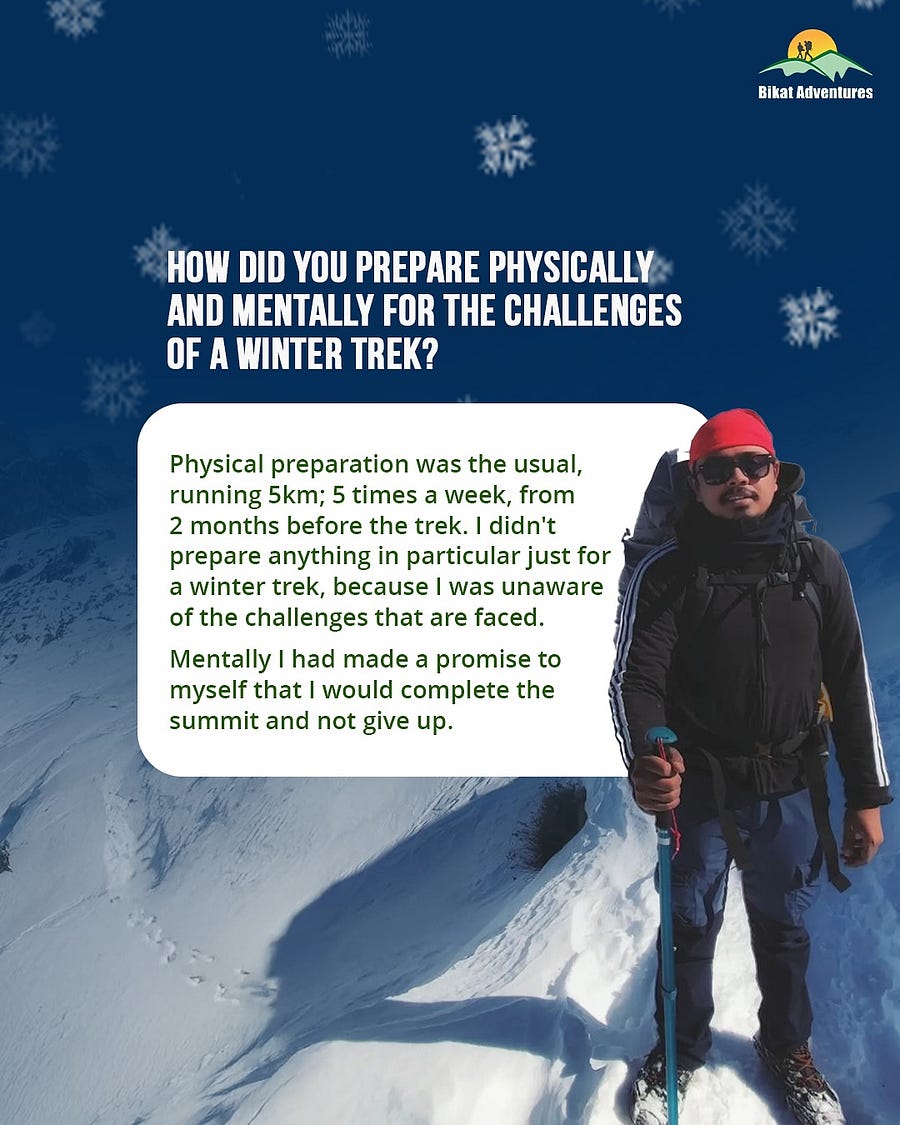
4. WHAT ADVICE WOULD YOU GIVE TO SOMEONE PREPARING FOR THEIR FIRST WINTER TREK IN THE MOUNTAINS?
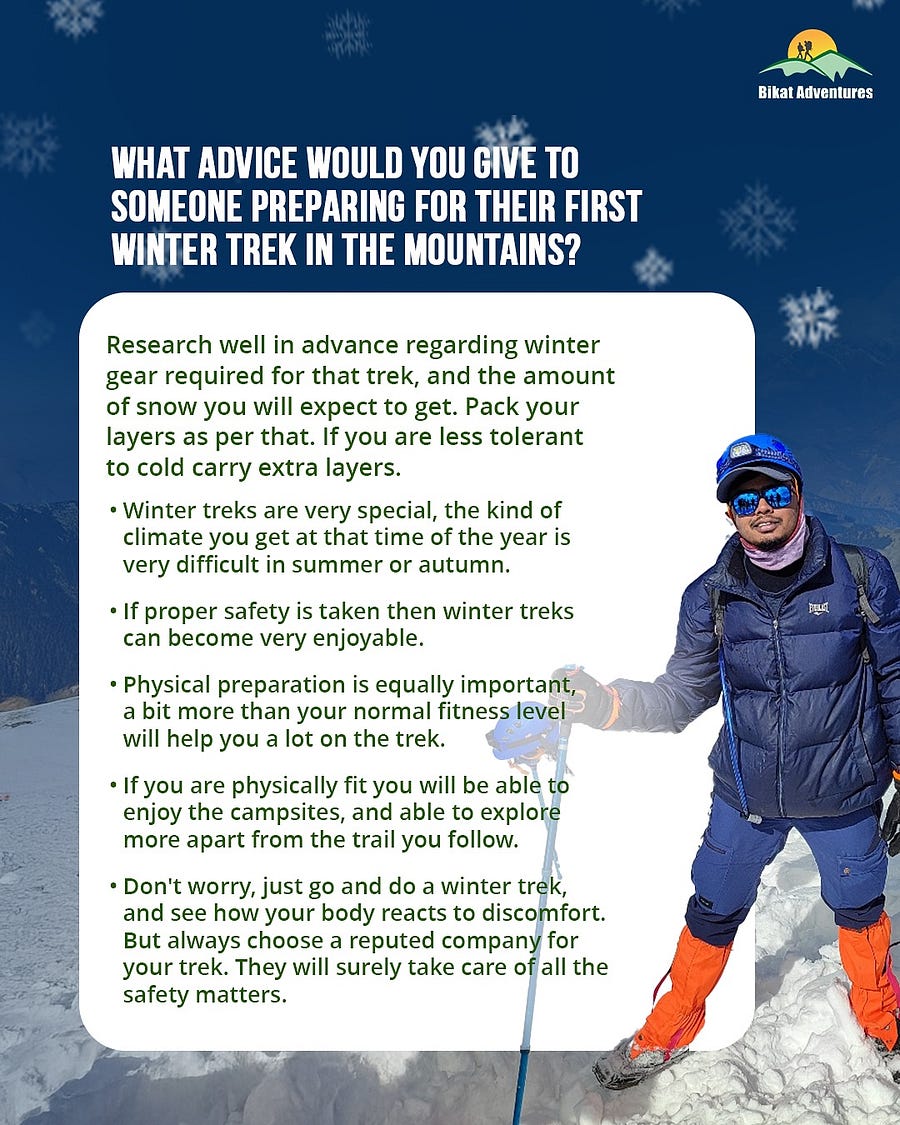
Research well in advance regarding winter gear required for that trek, and the amount of snow you will expect to get. Pack your layers as per that. If you are less tolerant to cold carry extra layers.
• Winter treks are very special, the kind of climate you get at that time of the year is very difficult in summer or autumn.
• If proper safety is taken then winter treks can become very enjoyable.
• Physical preparation is equally important, a bit more than your normal fitness level will help you a lot on the trek.
• If you are physically fit you will be able to enjoy the campsites, and able to explore more apart from the trail you follow.
• Don’t worry, just go and do a winter trek, and see how your body reacts to discomfort. But always choose a reputed company for your trek. They will surely take care of all the safety matters.
5. HOW WAS THE OVERALL EXPERIENCE OF YOUR FIRST WINTER TREK? WAS THERE A SPECIFIC MOMENT OR VIEW THAT MADE ALL YOUR PREPARATION FEEL WORTH IT?
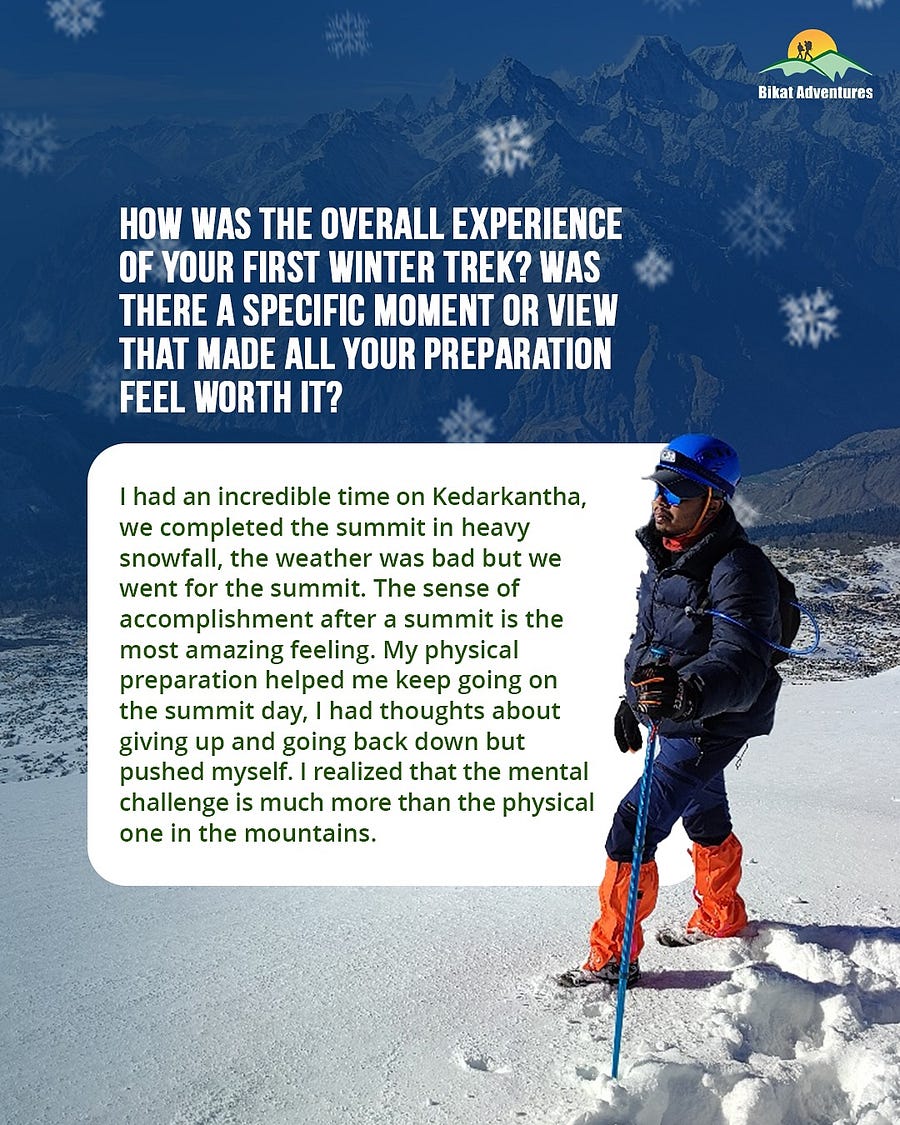
I had an incredible time on Kedarkantha, we completed the summit in heavy snowfall, the weather was bad but we went for the summit. The sense of accomplishment after a summit is the most amazing feeling. My physical preparation helped me keep going on the summit day, I had thoughts about giving up and going back down but pushed myself. I realized that the mental challenge is much more than the physical one in the mountains.
6. WHAT KIND OF SUPPORT DO YOU EXPECT WHEN ON A TREK? HOW HAS YOUR EXPERIENCE WITH BIKAT ADVENTURES BEEN SO FAR?
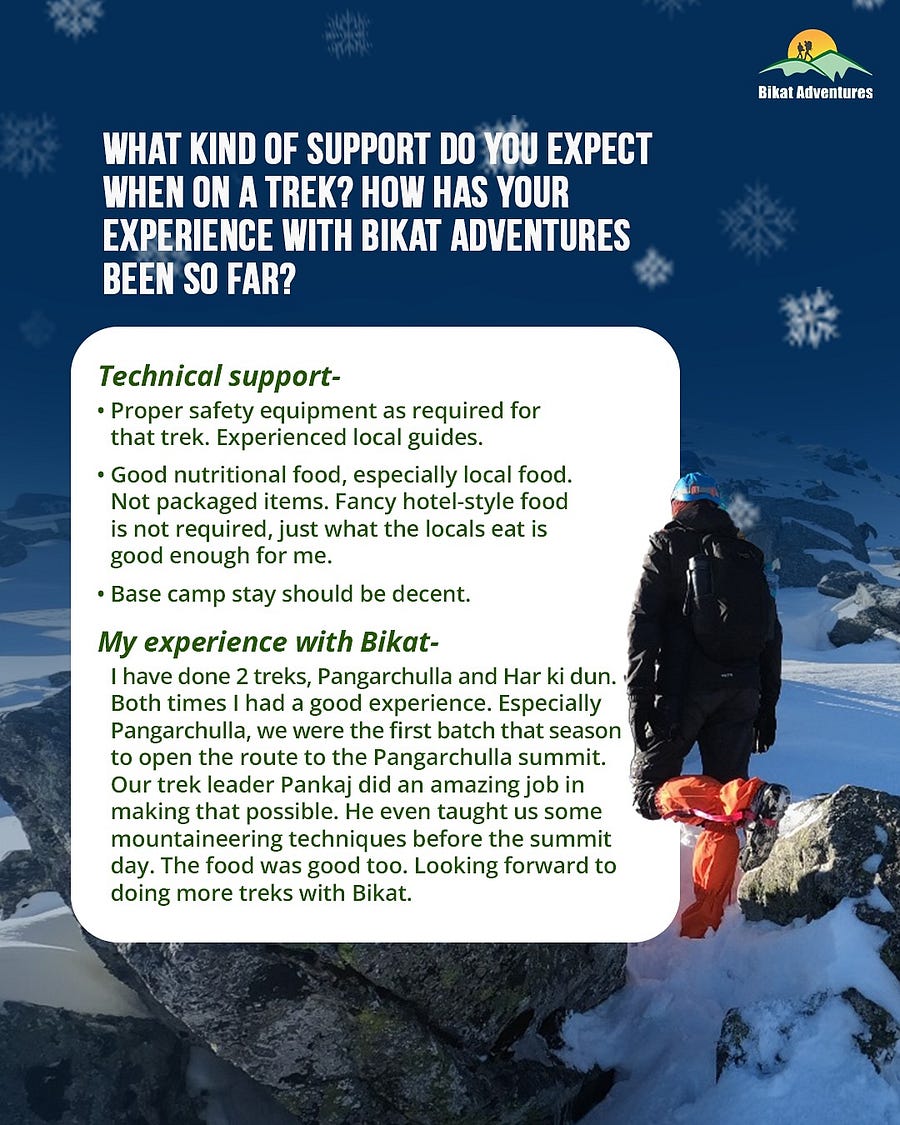
Technical support-
• Proper safety equipment as required for that trek. Experienced local guides.
• Good nutritional food, especially local food. Not packaged items. Fancy hotel-style food is not required, just what the locals eat is good enough for me.
• Base camp stay should be decent.
MEGH EXPERIENCE WITH BIKAT ADVENTURES
I have done 2 treks, Pangarchulla and Har ki dun. Both times I had a good experience. Especially Pangarchulla, we were the first batch that season to open the route to the Pangarchulla summit. Our trek leader Pankaj did an amazing job in making that possible. He even taught us some mountaineering techniques before the summit day. The food was good too. Looking forward to doing more treks with Bikat.






















Comments
0 comment